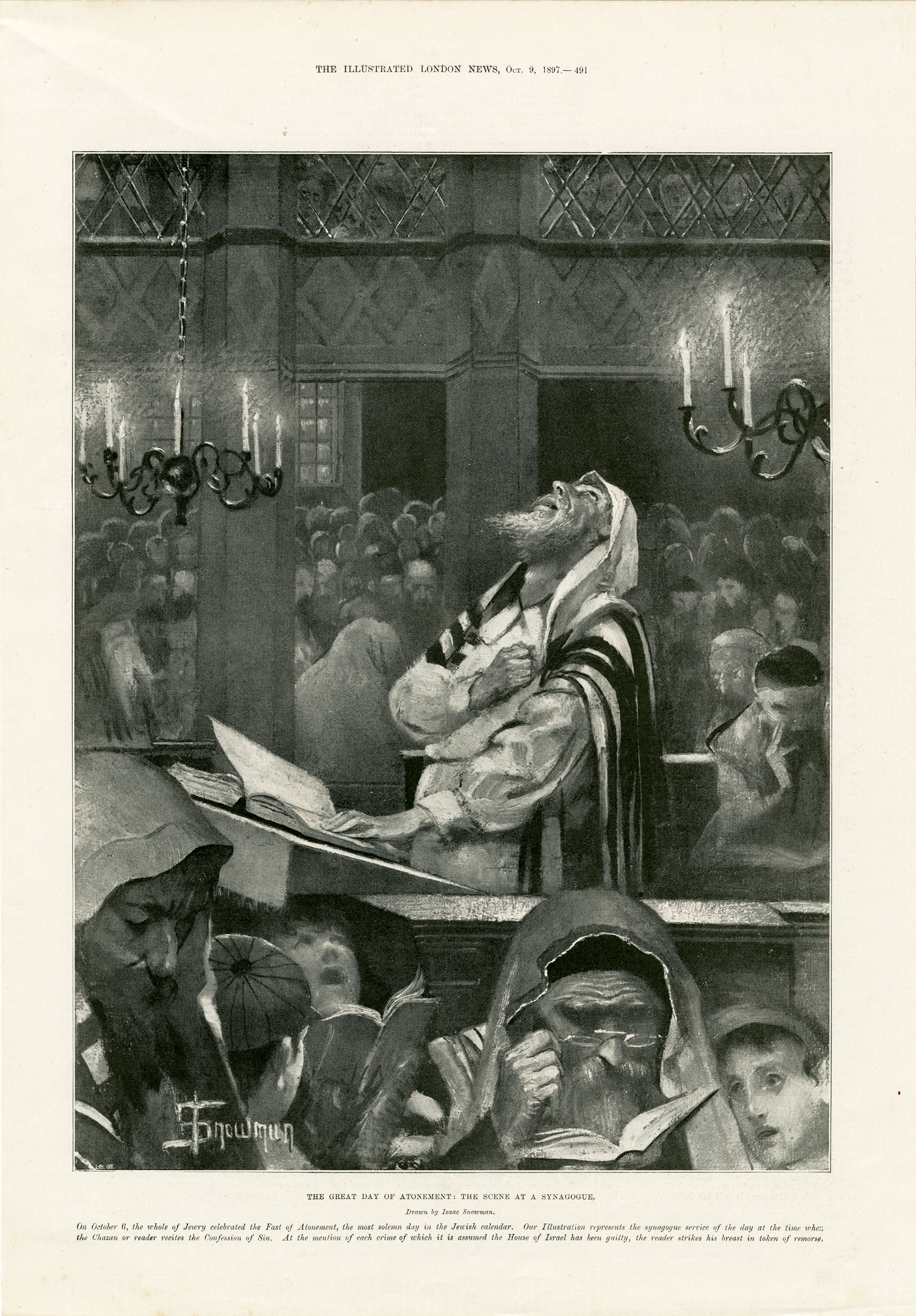During Yom Kippur, also known as the Day of Atonement, Jews repent and atone for their sins through fasting, synagogue attendance, and intensive prayer. They also abstain from work, marital relations, wearing leather shoes, and many other activities. One of the high points of the Yom Kippur services is the recitation of prayers of confession and remorse by the entire congregation. Such prayers are part of the normal liturgy, but on Rosh Hashanah and Yom Kippur, they are sung aloud and with great feeling by the worshipers. The cantor leads the prayer and, as is shown in this image by Anglo-Jewish artist Isaac Snowman (1873–1947), at “the mention of each crime of which it is assumed the house of Israel has been guilty strikes his breast in token of remorse.” The prayer is recited ten times throughout the several Yom Kippur services, and with increasing fervor as the end of the day draws near.
Snowman and the Illustrated London News represent to the public this moment of high drama, with the cantor’s face uplifted in prayer. Men are seen surrounding the bimah, also intent on their devotions, and women can be seen pressed to the grille of their upper gallery. Any Jew familiar with the service can almost hear the melody of the vidui (confession) prayer. Snowman’s chiaroscuro technique casts the strongest light on the face of the cantor and one old bespectacled man reading his prayer book close to the picture plane, while other worshipers are shown in less detail and cloaked in shadow. With this dramatic technique, even a stranger to the ceremony will feel its intense emotion.
